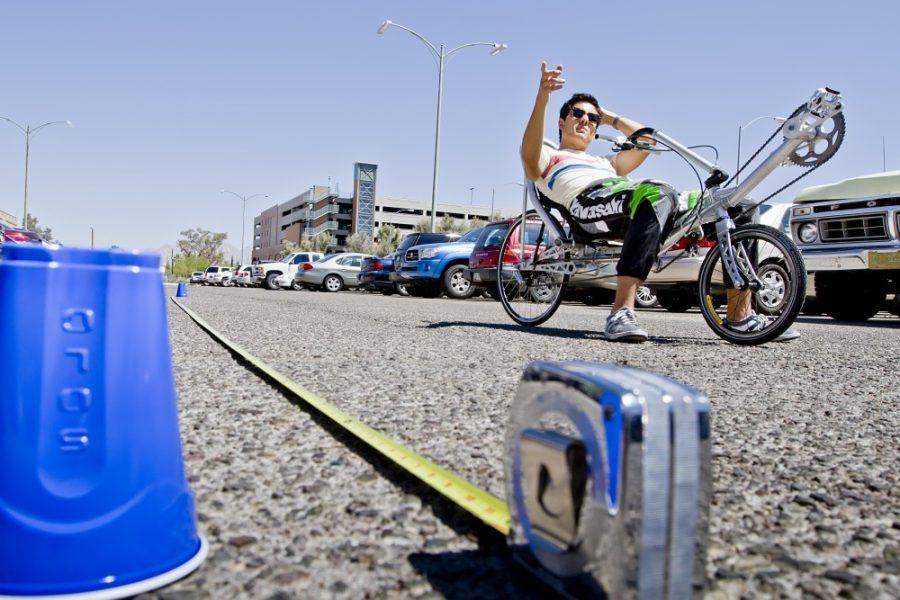Months of planning, designing, testing and retesting culminated at Engineering Design Day on Tuesday, where engineering seniors from every discipline showcased the fruits of their labor in Bear Down Gymnasium.
The event featured more than 50 projects created by engineering students working directly with industries to design everything from miniature airplanes to smartphone applications. Many projects were sponsored by companies like Raytheon, Airtronics and Caterpillar Inc., which offered participants $13,000 in prizes. Students competed to win one of 20 awards including the top prize of Best Overall Design, sponsored by BAE Systems.
“We work toward this for four years, and finally we get to show something for it,” said Maricela Rivera, a senior studying agricultural and biosystems engineering. “It’s not just books, it’s something real.”
Throughout the academic year, the engineers work in teams to design, test and compete with their projects. Some were able to travel across the country to get materials and face off against other engineers.
One team of aerospace engineers competed in the American Institute of Aeronautics and Astronautics Design/Build/Fly Competition in Wichita, Kan. They built a miniature airplane and put it to the test in three missions.
The first mission, to complete as many laps as possible over the flight course in four minutes, was a success, but the other two trials were cancelled due to a tornado, the team said.
Despite the bad weather, they returned to Tucson and completed the remaining missions on their own.
Another group developed a sensor for helicopters to monitor the “health” of the operating system. The sensor measures the stress on the helicopter and warns the pilot if it is going to break down.
The four-member team drove to Oregon to get one of the parts they needed for their health-monitoring system, said Danielle Theodore, a systems engineering senior.
“I think the biggest thing we gained was camaraderie,” she said. “We got outside our comfort zone in every way.”
Rivera led a team of students who designed a system to convert used cooking oil from the UA student unions into biodiesel. The student unions throw out approximately 500 gallons of cooking oil every month, Rivera said. Her team’s project aimed to turn that waste into fuel for various vehicles on campus, like the CatTran.
“We tried to make it as green as possible,” she said.
The project that earned the award of Best Overall Design went to the Computational Optics team, who applied optical design in the nose cones of airplanes.
“I feel that all of our hard work we have made for the past year has paid off,” said Kate Green, an industrial engineering senior and one of the six members who won the award. “When we met our sponsor the first day, we told them we wanted to try and win.”
Michael Easton, the project’s sponsor and a Raytheon employee, said the team will be going to the Optical Society of America conference in Monterey, Calif., this June to present their project.
“These six individuals are literally the best and brightest we have to offer,” Easton said. “Expect all of them to have extremely bright futures.”









